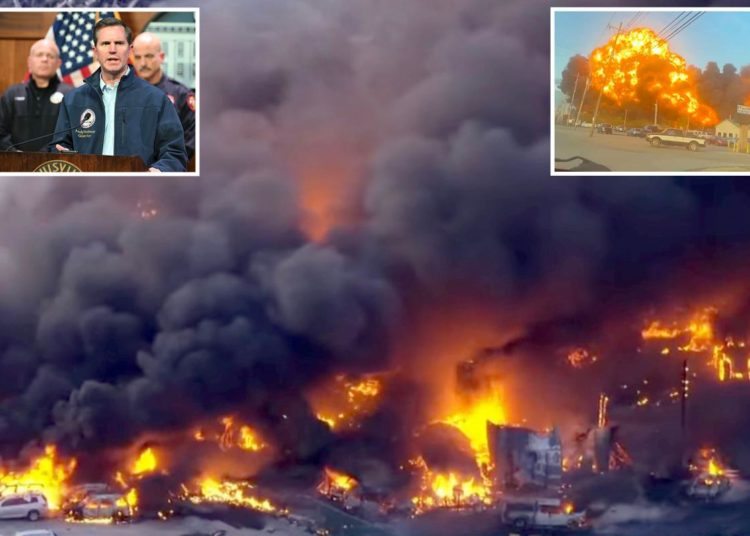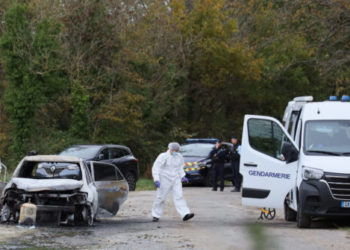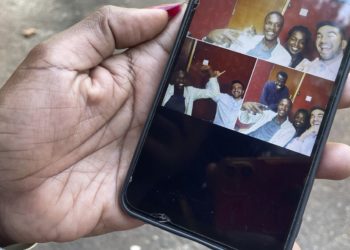The largest and richest city in America now has a 34-year-old democratic socialist Muslim as mayor-elect. Zohran Mamdani will be the youngest person to run New York City in over 130 years, the second card-carrying D.S.A. member and the very first Muslim. His shocking triumph in the Democratic mayoral primary was almost five months ago, making his victory last night feel almost like old news. But it shouldn’t.
I am 43 years old and have lived almost my entire life in New York City. Never across those decades has the city elevated someone to such power so quickly — not even close. In February Mamdani was barely registering 1 percent in polls and putting out videos about “halalflation.” On Tuesday he won more votes in the city than Michael Bloomberg did in any of his three campaigns for mayor — more votes, in fact, than any New York City mayoral candidate since 1969. Along the way, he expanded the electorate and earned some glowing comparisons to Barack Obama, somewhat more measured analogies to Bill de Blasio and an awful lot of fear-mongering backlash and low-road counteroffensives.
In the campaign’s closing weeks, Mamdani’s rival, former Gov. Andrew Cuomo, described the race as a central front in a civil war for the Democratic Party. Cuomo and his surrogates desperately caricatured Mamdani as both a woke extremist and an Islamic fundamentalist, making common cause with President Trump and flooding social media with hateful A.I. slop. Mamdani, the obvious front-runner for many months, cut a different profile — looking not like a Manchurian candidate but instead like the embodiment of publicly financed elections, pitching the promise of a new generation’s politics to a disengaged electorate. On election night he took a more strident tone, opening his acceptance speech by quoting Eugene Debs and pointedly picking a fight with Trump.
Everyone seems to want to make an election like this mean something beyond New York. Is this the arrival of a progressive Tea Party? The return of the Bernie Sanders surge and squad years? A repudiation of the Democratic Party’s cautious moderation in the run-up to the 2024 presidential election (and even more emphatically in the aftermath)? Or something else altogether new?
To my eyes, it’s a strain to make Mamdani’s victory an immediately representative national story, but his coalition does suggest one lesson for national Democrats. In recent years, we’ve gotten used to looking out at the changing landscape of politics and seeing a right-wing alliance of working Americans and wealthy people, united by disdain for a professional managerial class seen as liberal scolds. Mamdani’s win illustrates a different alignment. He brought the working, middle and upper-middle classes together in what I called back in July an “emergent coalition of the precariat” — united in part by a growing affordability crisis and in part by simple rage about income inequality, corruption and the entitlement and impunity of the very rich. What looks like populism can appeal to a pretty broad swath of white-collar college grads, too.
One of the most remarkable aspects of Mamdani’s victory is that, faced with months of skepticism about his agenda and fear-mongering about his identity, his lead has been steady. In June you might’ve thought the bubble would eventually burst, given the amount of energy and money that was being spent on puncturing it. But Mamdani demonstrated an exceptional talent for mixing what are sometimes called “material” politics and “postmaterial” ones. Unshakably on-message about kitchen-table issues, he served up a transformational vibe via vertical video and through direct canvassing. Watching the campaign up close, it’s almost hard to understand how many political observers have treated social media and concrete policy as such distinct, even contradictory, spheres. Each feeds the other, expanding the sense of what’s possible by making transformational rhetoric more tangible and even small-bore policy changes more consequential.
Although Mamdani’s critics painted his platform as irresponsibly radical, his agenda mostly extends initiatives first enacted or proposed by previous mayors: Bloomberg tried making some buses free and started a program that brought produce carts to food deserts; in addition to freezing rents in stabilized units three times, de Blasio established universal public pre-K and made headway on free 3-K, a program Mayor Eric Adams eventually came around to support, too. You may have heard that Mamdani wants to end gifted and talented programs in the city’s public schools, but — at the moment, at least — he seems more focused on ending it for kindergartners, rather than getting rid of the city’s separate entry point for third graders. His tax hikes are not especially onerous, though they also are not likely to be as popular in Albany, which will actually decide. And his proposal to end mayoral control of schools may prove just as complicated.
But it would be a mistake to see Mamdani’s victory as a modest or inconsequential one just because it is likely to produce halting progress. Many of his voters, like many of his critics, also saw the campaign as a skirmish in a kind of civil war — and one they won. “This city is your city,” the mayor-elect said on election night, “and this democracy is yours, too.”
As a result, his win has already helped resketch the geography of status within the city — perhaps the most immediate effect of election night. Bloomberg was a Manhattan mayor, his Upper East Side townhouse as recognizable a landmark as Gracie Mansion. De Blasio was a cartoon of gentrified Brooklyn and Adams a machine-politics avatar of the borough’s outer reaches (with a little Zero Bond energy thrown in). Mamdani was raised in Upper Manhattan around the Columbia campus, and a lot of his voters live in the neighborhoods along the Brooklyn side of the East River, which the analyst Michael Lange memorably called the “Commie Corridor.” But as a mayor, he looks more like he may be the face of the new Queens, a borough which gave rise to Trump and is now the most diverse county in the continental United States.
The triumph, and the new electorate that produced it, signals subtler shifts, too: away from car drivers and homeowners and toward bus riders and renters; away from finance and toward small business; away from boomers and toward zoomers; away from an old rulebook about the city’s politics, particularly around Israel, and toward a new one, which at least acknowledges the fact that the city is home to nearly as many Muslims as Jews.
This is one aspect of the campaign that does tell a national story, and not just because the anti-Mamdani coalition has hyped it so aggressively. This summer, Gallup found that only 8 percent of Democrats supported Israel’s military action in Gaza, and the declines aren’t simply generational, with bigger drops of support among older Democrats than younger ones. It is not entirely clear what path the Democratic Party will take on Israel going forward, but Mamdani’s win is one sign among many that the old party consensus is tenuous. This also explains some of the sheer intensity of the anti-Mamdani animosity, which has been nearly as startling as his rise.
Skeptics may hamper Mamdani’s mayoralty, as they did to a degree for de Blasio 12 years ago, when that mayor staged his own improbable victory over the establishment heir apparent, Christine Quinn, with his “Tale of Two Cities” campaign. A dozen years later, that message still packs a punch in both directions: mobilizing the marginalized and agitating the affluent.
For New Yorkers nervous about a Mamdani mayoralty, the last few weeks should be at least somewhat reassuring. He has said that he plans to ask the N.Y.P.D. commissioner Jessica Tisch to stay on board, perhaps as an olive branch to the city’s elites, who love her (and see her as one of their own). After waffling for most of the campaign, he told reporters on Election Day that he was voting yes on all the YIMBY housing ballot measures. And most of the people he is reportedly considering for top positions in his administration are experienced bureaucrats rather than ideological agents or personal allies, suggesting that he is prioritizing making the city run as much as he is hoping to remodel it. It was an idea he repeated again and again while campaigning: Competence and efficiency shouldn’t be conservative buzzwords but progressive values, given that it’s people on the left who most want the government to actually work.
Will it? On X and in glitchy Sora videos, Mamdani’s haters have presented him as a destructive radical already in over his head. But in his real-life suit and smile, he looks the part of an eager-beaver student council president. Consider the case of Graham Platner, and you may start to worry about what happened to John Fetterman. But look long enough at Mamdani, and you start to see a bit more Pete Buttigieg. Gov. Kathy Hochul is very showily on board, as are the leaders of the New York State Senate and State Assembly. Obama himself, American liberalism’s great meliorist conscience, appears to be a fan.
As long as Mamdani is in office, the city will be home to haters. But as the temperature of the campaign season cools, the bigger challenge will likely come not from those in New York but from those in Washington. One hater in particular: Trump, who — among his many assaults on the basic balance of American order — has initiated a new era of federal police action, in which progressive local politicians have to do battle not merely with skeptical voters and a hard-to-budge status quo but also with the prospect of periodic invasion by federal agents, dispatched to disrupt the basic liberal metabolism of their cities.
This is another way of reading the olive branch to Tisch: In any potential future conflict with federal immigration agents, national guardsmen or armed service members, it’s pretty important for Mamdani to keep the local police force on his side. Tisch’s own family appears prominently on the list of billionaires who spent so profligately to defeat him, and the mayor-elect and his choice to run the N.Y.P.D. disagree on what caused the pandemic crime surge and what it tells us about criminal justice reform. (On the merits, Mamdani has the much stronger argument, given that cities across the country also experienced those crime waves, regardless of policy choices.) That Mamdani would ask Tisch to serve in his administration despite their disagreements may be a gesture of local realpolitik. It is also a signal, perhaps, that the politics of policing and safety have become less about crime and disorder and somewhat more about federal incursions and the unpredictable menace of Trump.
Mamdani seems to recognize the possibility. “New York will remain a city of immigrants, a city built by immigrants, powered by immigrants,” he declared on election night, “and, as of tonight, led by an immigrant.” He went on: “So hear me, President Trump, when I say this: To get to any of us, you’ll have to get through all of us.”
The post Why Mamdani Won appeared first on New York Times.




